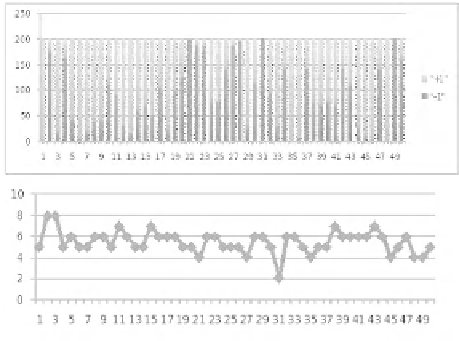Information Technology Reference
In-Depth Information
-
a
j
prefers alternative
a
with the highest score,
-
a
j
's conviction relative to alternative
a
equals
n
a
j
n
a
j
.
+
n
a
j
Preference changes depend on how convictions evolve over time. For any agent
a
j
,
it is assumed that a threshold
a
j
>
0
exists such that when the difference between
two convictions lies below this threshold, then agent
a
j
cannot have a preference. This
threshold value may be characteristic of each agent. To summarize: if
c
a
j
|
|
c
a
j
−
<
a
j
,
then
a
j
has no preference; if
|
c
a
j
−
c
a
j
|≥
a
j
,
a
j
prefers the alternative with the
highest conviction.
An agent without a preference cannot intervene, which is stated as one of the debate
rules.
4.2
Simulations of Debates Outcome
Fig. 4.
Identity
In order to illustrate the principle of the above dynamic representation of a debate, the
four following elementary models for influence function
B
have been implemented:
-
B
is the identity, i.e. for any inclination vector i, it can be stated that:
Bi
=
i
;
-
B
is the opposite of identity, i.e. for any inclination vector i, it is stated that:
Bi
=
−
i
;
-
B
is a mass psychology effect function. More precisely, let's denote
i
=
{
k
∈
N
|
i
k
=
}
,where
B
satisfies the following: for each
i
∈
I
:
|
i
|
>t
,then
i
⊆
(
Bi
)
,where
t
1
;
-
B
is a majority influence function that models behavior of the following types: if
a majority of agents have an inclination
+1
, then all agents decide
+1
; if not, all
agents decide
∈
[1
,n
]
and
=+1
or
−
−
1
.
For these four cases, the group decision function
gd
is, a mere majority and a basic
capacity is designated, as proposed in Section 1.3.


